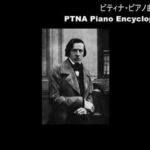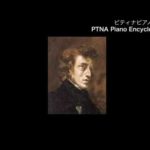Frédéric François Chopin (1810 – 1849) was a Polish composer and virtuoso pianist of the Romantic era who wrote primarily for solo piano. He has maintained worldwide renown as a leading musician of his era, one whose “poetic genius was based on a professional technique that was without equal in his generation.”
The Op. 10 Études were composed in the period 1829-1832 and dedicated to Franz Liszt. This Op. 25 collection bears a dedication to Liszt’s mistress, Countess Marie d’Agoult, a writer who used the pseudonym Daniel Stern. One reason Chopin attempted to capture Liszt’s sympathies with the dedications had to do with the performance design of the pieces in the two sets: each was written to highlight some facet of pianism. For example, in the Op. 25 collection, No. 2, in F minor, is a study in cross rhythms, while No. 10, in B minor, is a study in legato octaves.
The first item in the Op. 25 set is nicknamed the “Aeolian Harp,” owing to its soft and graceful arpeggios. The piece is lively and full of color, but slightly wistful in its dark gentleness. Robert Schumann praised this work in a dissertation on the Études; calling it “a poem rather than a study”, he coined for it the alternate name “Aeolian Harp”. It is also sometimes known as “The Shepherd Boy,” following an unsupported tale by Kleczynski that Chopin advised a pupil to picture a shepherd boy taking refuge in a grotto to avoid a storm playing the melody on his flute.
This étude comprises a right-hand melody and supportive bass line, the accompaniment consisting of broken chords, provided by the inner voices of both hands, usually in semiquaver-tuplets. The left hand introduces polyrhythms from time to time. The principal melody is presented by the right hand on the first note of each group of sextuplets, with occasional counter-melodies provided by the inner voices.
The distinctive theme is presented in A-flat major. Through metamorphic modulations to closely related keys, it eventually arrives at a brief episode in the remote key of A major, but culminates with an intense climax in the home key, and a momentary reference to the original thematic material, which flows easily into the coda.
Source: AllMusic (https://www.allmusic.com/composition/etudes-12-for-piano-op-25-ct-26-37-mc0002358774 ).
Although originally composed for solo piano, I created this Transcription of the “Aeolian Harp Étude” in Ab Major (Op. 25 No. 1) for Concert (Pedal) Harp.




